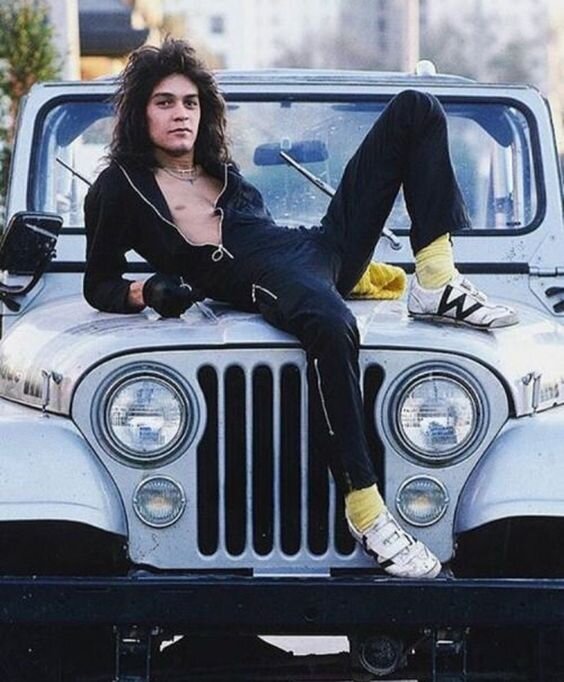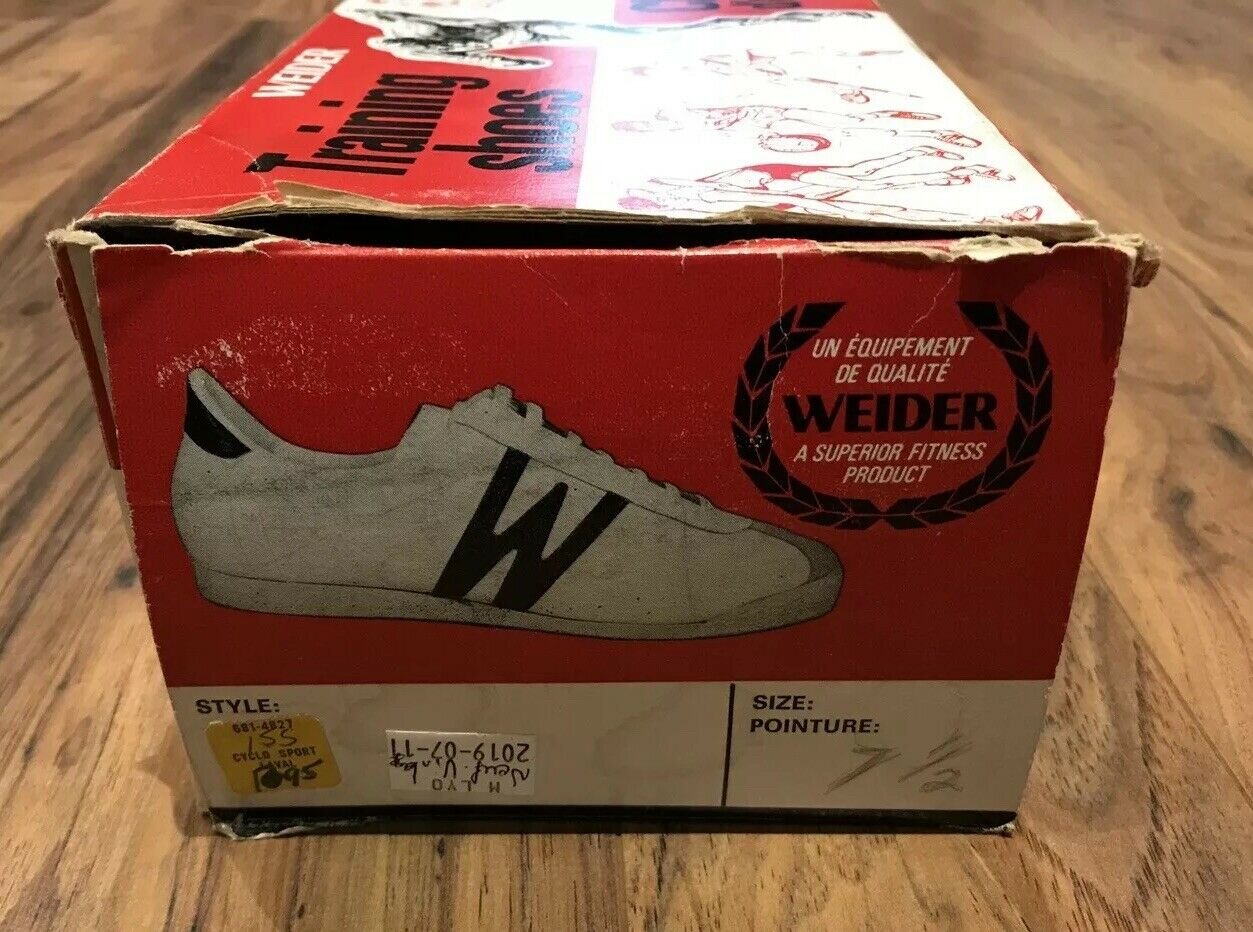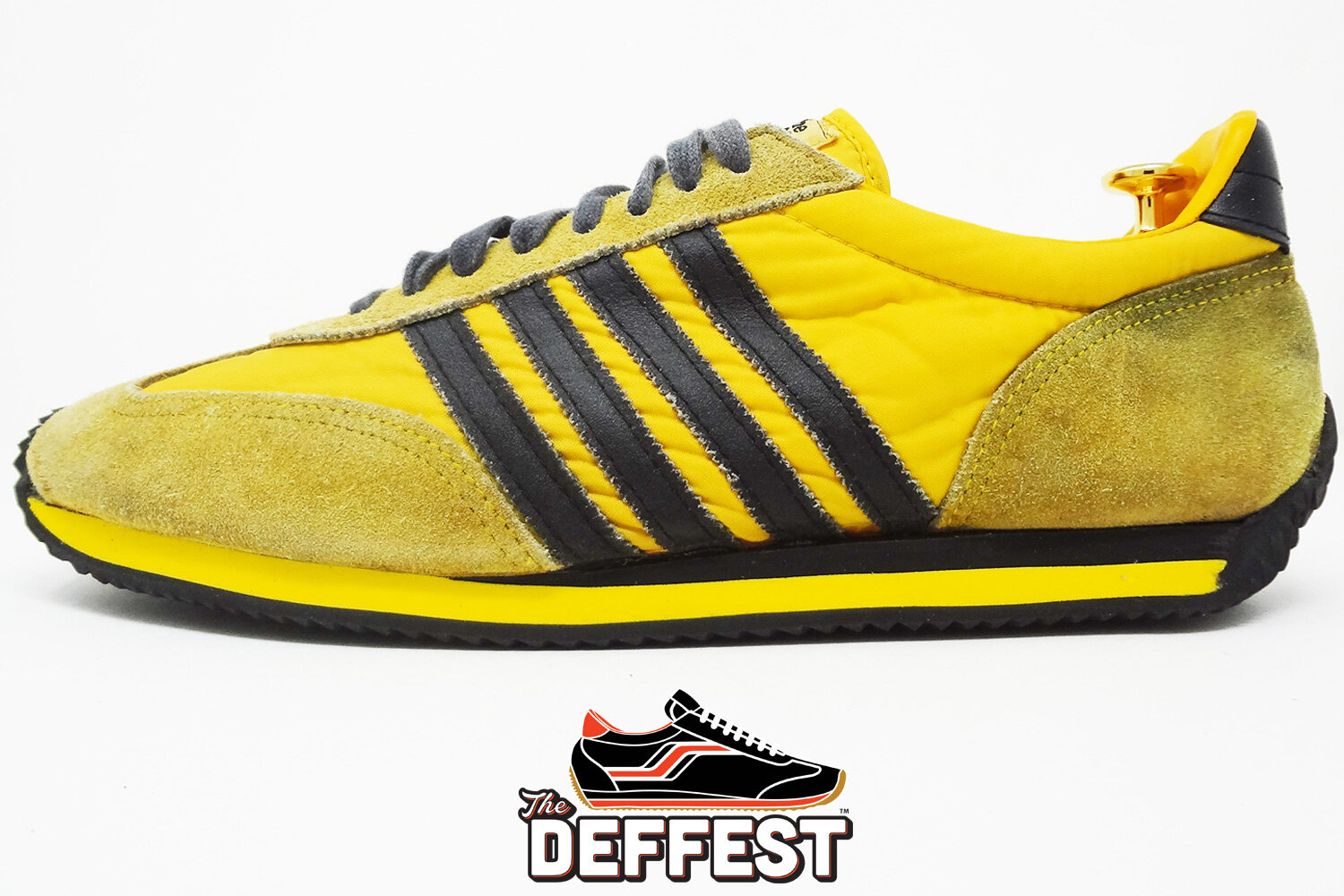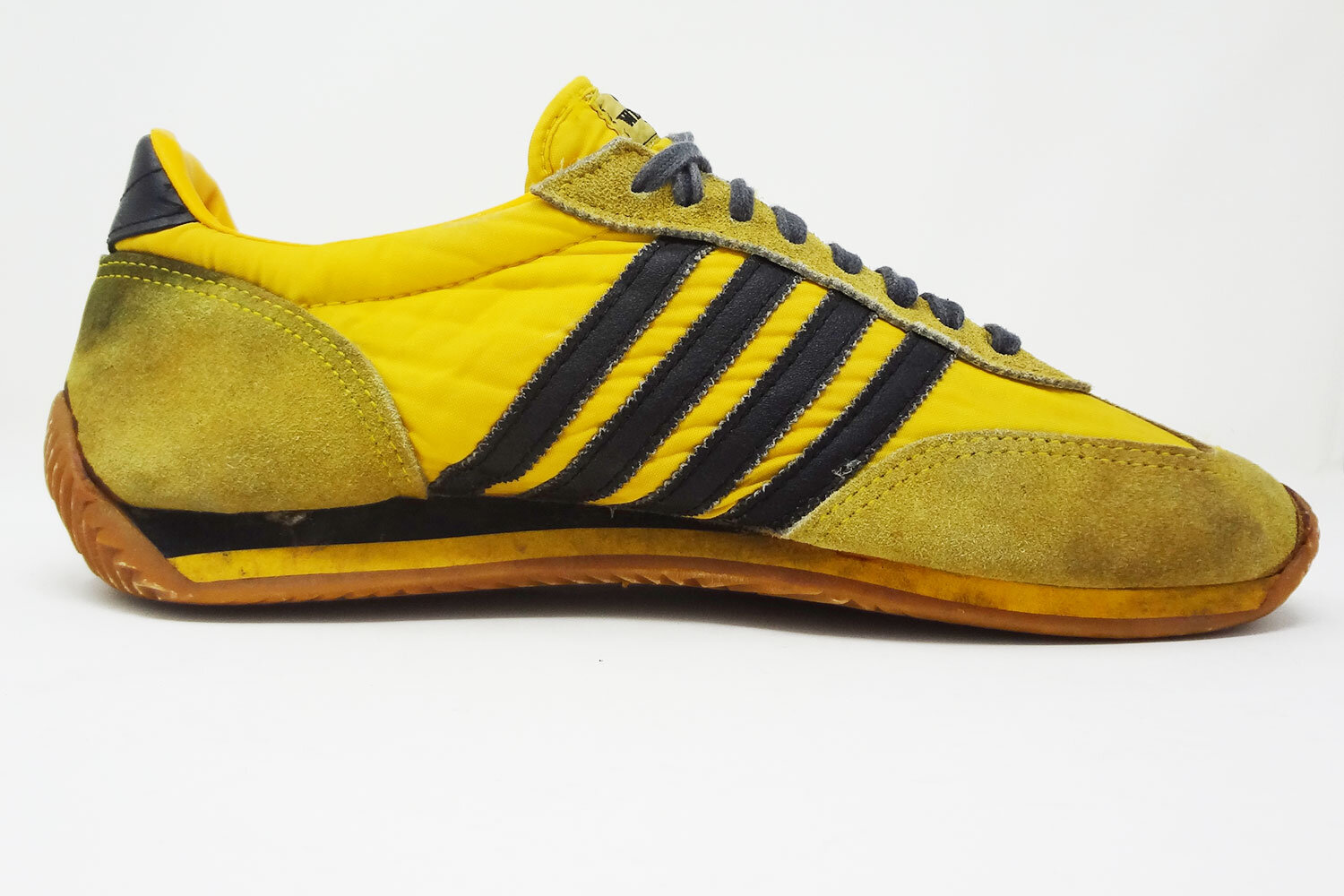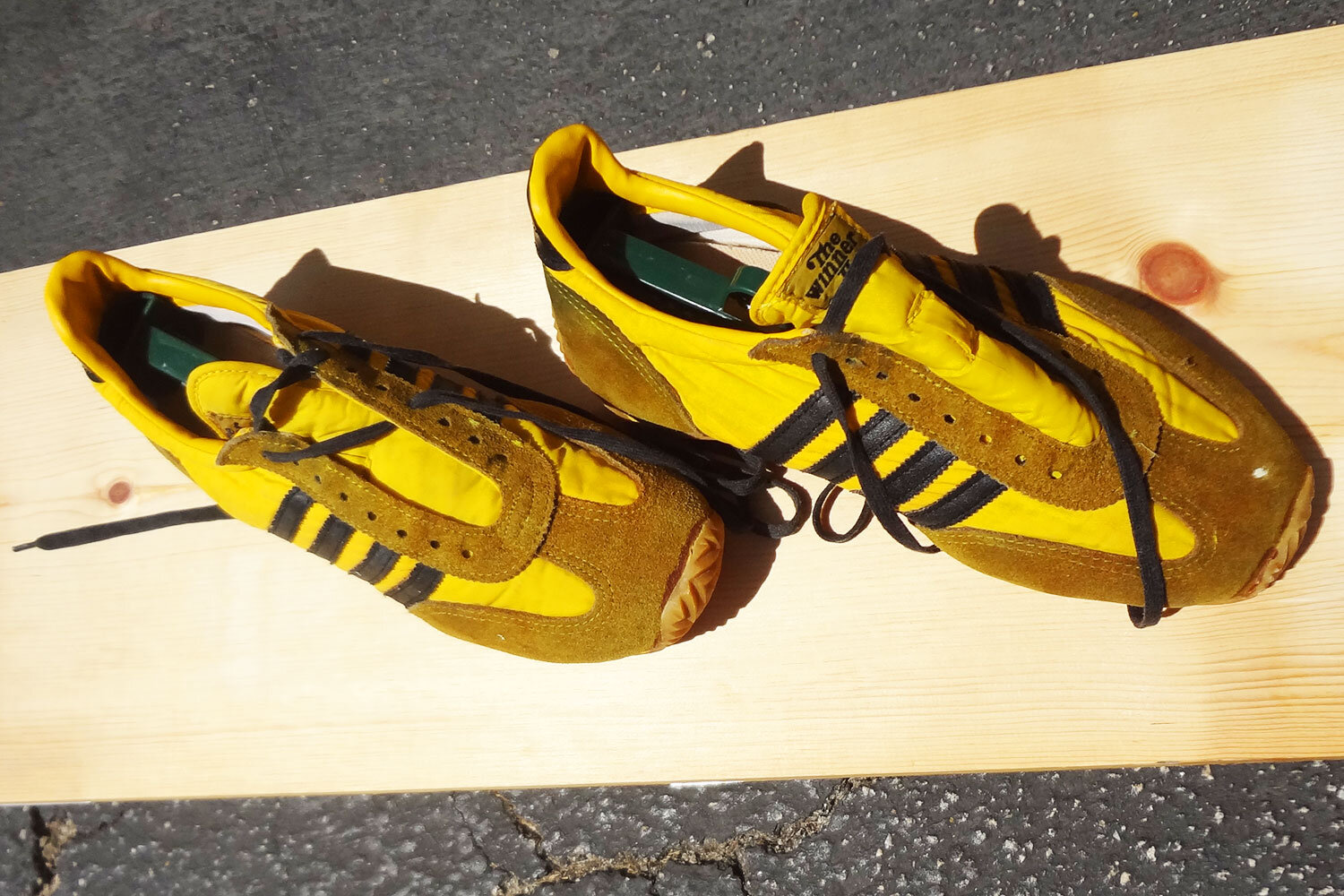Harput’s was founded by Turk Harput and we’ve included the full history from Robin J. Moody’s Portland Business Journal article ‘Vintage sneaker showcase’ from Jun 26, 2003.
Vintage sneaker showcase
Collectors covet long-ago models from top athletic shoemakers
By Robin J. Moody of The Portland Business Journal
Jun 26, 2003
It all started when Turk Harput was cruising a flea market in Oakland, Calif., in 1978 and spotted 1,000 pairs of discontinued sneakers.
He traded his '74 Volvo for the entire stock and began hawking the shoes--some dating from the '40s--from the back of his VW bus. Most sold for $5 or $10.
Today Harput's, the store that bears his name, is a purveyor of rare and retro sneakers that enjoys a special partnership with Adidas and caters to "sneaker heads" or rare shoe collectors.
It has a thriving web-based business, in addition to a shop in the Fillmore district of San Francisco. Turk Harput's son Gus Harput opened a shop in Portland at 139 N.W. Second Ave. in December 2002. It remains a family-owned business.
Ken Thornby, director of sports heritage for Adidas America, called Harput's one of the company's "trend accounts," that gets dibbs on Adidas' most exclusive product.
"We have had a working relationship with Harput's since the '70s. We share ideas and when there are sneaker shows in town we sometimes go together," Thornby said.
Sales of so-called retro shoes grew 11.4 percent in 2002, according to the trade group Sporting Goods Manufacturers Association. Harput's has made a name for itself selling these clean, old-school styles.
The Harput family has taken the unusual step of putting select shoes into storage. They take them out--sometimes decades later--to sell. This strategy has helped the company find a niche and stay in business in a market dominated by national chains.
"We had to specialize and offer what the chains could not," said Gus Harput. "We cut down our buying of shoes to those that were deemed classic and original and left the athletic performance stuff completely. We pulled this off at first with our extensive supply of 'dead-stock' shoes, put away for years in our San Francisco basement."
At the same time, manufacturers like Adidas began offering more retro models, distributing many lines of exclusive and limited edition product to shoe boutiques. The strategy has helped build a customer base for a whole new market segment--the sneaker collector, according to Gus Harput.
"[Adidas was] right at the beginning of reshaping sneaker tastes and reintroducing the retro products customers wanted," Harput said.
At the Portland shop, a few pairs of true vintage shoes are for sale in addition to dozens of re-released originals from Nike, Adidas, Puma and even New Balance.
A pair of original Adidas Chile '62s is priced at $160, and a pair of 1982 Nike Air Flights costs $200. A pair of Adidas designer Yohji Yamamoto's knee-high, neoprene, fashion-statement boots is priced at $400. A call to Nike was not returned by press time.
Owner Gus Harput has an extensive personal collection of rare shoes--many of which are on display at the Old Town store. One particularly rare Adidas shoe on display, made of ostrich skin, is reputed to be worth $10,000.
Part of the lore of Harput's is its online Harput's Vault, which sells rare and sought-after shoes, typically for $1,000. This week, Adidas Universal Kangaroos, made in West Germany, and the French-made Adidas Tobacco, were among the featured shoes for sale.
"With Adidas, the highly valuable shoes are those manufactured in France, Yugoslavia and West Germany because the company hasn't made sneakers there in 15 years," explained footwear culture consultant and sneaker collector Chris Hall.
Hall added there are a limited number of hard-core sneaker collectors, but more people who will pay high prices for remakes.
"There is a small handful across the world--perhaps 100--who will pay top dollar for vintage sneakers. There are more that would pay $700 for a remake that came out this year," said Hall, who also writes a column on footwear called Kickin' It for Mass Appeal magazine.
A good portion of sneaker heads are Asian males ages 13 to 35, Hall said. Hipsters and baby boomers are also fans, Harput said. Retro shoes are worn by people seeking fashion over function.
"For some it is reminiscing their youth through Adidas trainers they wore as kids, or trainers they wish they'd worn as kids. ... For others it's their devotion to the mighty athletes or teams that donned the three stripes on the winners' podium," Harput said in a recent inter-view with the online publication Propertop.com.
Adidas spokesman Thornby said core consumers for retro shoes are ages 14 to 24. There are also men in their 30s who grew up during the sneaker boom and are nostalgic for the shoes they wore during their youth.
"These are sneaker junkies who spend the money to seek out expensive shoes. They are on top of fashion and art," Thornby said, and some even have photo albums of their collections.
But fickle consumer tastes could mean retro styles go the way of Day-Glo.
"I'm always concerned about changing tastes," Thornby said. "A lot of people thought it would be over by now, but sales are still strong. These are clean, comfortable products people connect with."
Gus Harput predicts sales will hold steady in the coming months, "but I don't see things bullish," he added.
Harput's Portland store is open from noon to 7 p.m. daily.




































